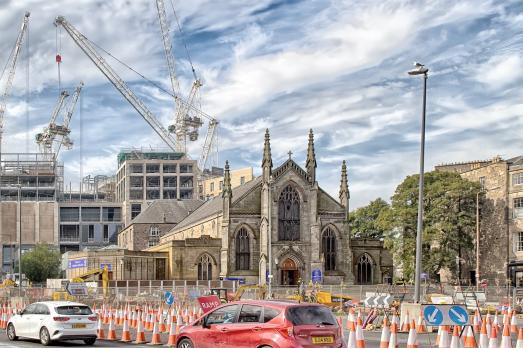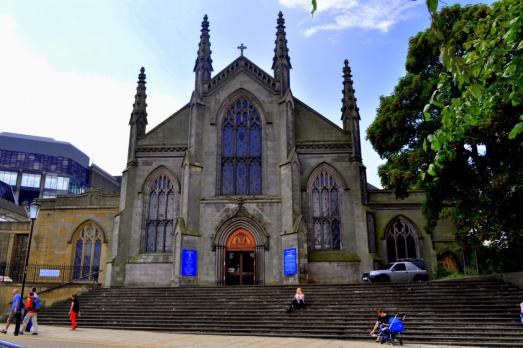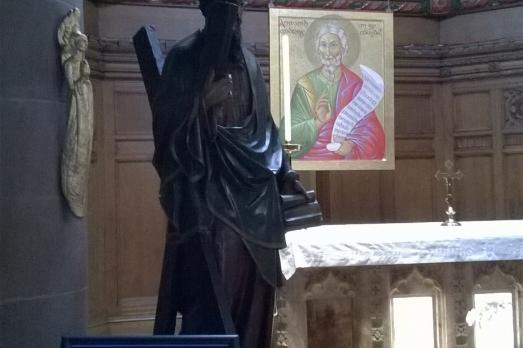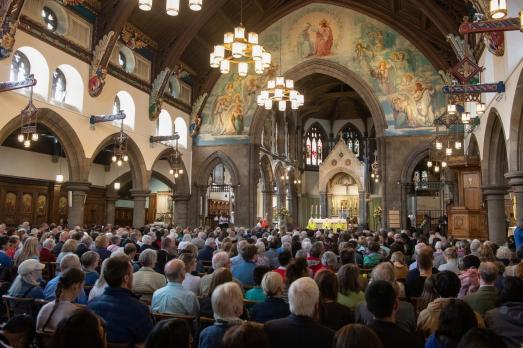St Mary’s Catholic Cathedral is a significant landmark in Edinburgh’s busy city centre. Home to the National Shrine of St Andrew, Scotland’s patron saint, it is open 365 days a year and is welcoming to all, with full disability access and facilities. The building complex includes a social project café and St Paul’s bookshop. Events are held during Edinburgh’s many arts and culture festivals and each year Mass is held to mark the Edinburgh International Festival.
Many historic, cultural and architectural features are housed within the Cathedral, including one of the largest pipe organs in the UK. In 1830, St Mary's was the main place of worship for the deposed King Charles X of France and his family, and in May 1982 it was visited by Pope John Paul II. An icon of St Andrew hangs above the altar with the words inscribed in Gaelic as well as English and Latin.
The site was originally chosen in 1801 by Bishop Hay after his Chapel in Blackfriars Wynd was burnt down by a mob, and in 1814 the Chapel of St Mary, as it was then, designed by the prominent ecclesiastical architect James Gillespie Graham, first opened. The building has been significantly developed over time and in 1878, on the restoration of the Scottish Catholic hierarchy, became the pro-cathedral of the new Archdiocese of St Andrews & Edinburgh. It was named the Metropolitan Cathedral on 5th July 1886.
The Cathedral celebrated its bicentenary in 2014. Now that it is no longer necessary to hide away as in 1801, the new setting provided by the redevelopment of the St James Centre in 2020 opened up the Cathedral to St Andrew Square and the busy streets beyond.





